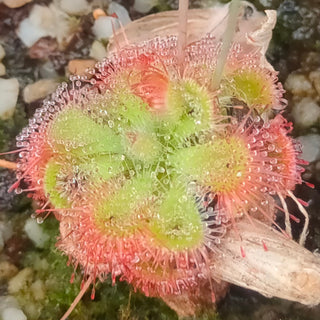Asclepias purpurascens
PURPLE MILKWEED
- Unit price
- / per
Asclepias purpurascens, the purple milkweed, is native to the Eastern, Southern and Midwestern United States similar to the range of the common milkweed (Asclepias syriaca). The plant gets its name from the flowers that first develop a pink color but then turn darker purple as they mature. Unlike common milkweed, purple milkweed prefers some shade and is considered a plant of partial shade. The species rarely produces seed pods which are smooth instead of the rough warty ones produced by common milkweed.
It is listed endangered in Massachusetts and Wisconsin, as historical to Rhode Island, and as a special concern species in Connecticut and Tennessee.
Like other members of the milkweeds, several insects live off the plant, including the monarch butterfly (Danaus plexippus), the milkweed beetle (Tetraopes tetraophtalmus), large milkweed bug (Oncopeltus fasciatus), small milkweed bug (Lygaeus kalmii) and milkweed leaf beetle (Labidomera clivicollis).[citation needed] Other insects and pollinators feed off the flower's nectar.
This species is sometimes cultivated in gardens designed to attract butterflies, but is less common than the light purple swamp milkweed (Asclepias incarnata) or the orange butterfly weed (Asclepias tuberosa). The nectar of the plant attracts many other species of butterflies and insects as well.
Rare and limited supply.
Type: Hardy perennial
Height: 24-36 in, 60-90cm
Location: Part sun
Hardiness zones: 3-8
Seeds per packet: 5
Sow just under the surface of the soil and water in. Temperature 20-22 C (68-72 F) for 4 weeks. They may be growing at this point. If they have not germinated after 4 weeks then a cooling period is required. Cover them with plastic and place in a fridge for 4 weeks. Be sure they stay moist. After the stratification period they are then brought back to room temperature for them to germinate. Germination can be 30-60 days after the warming period, though some can take longer.
Ornamental use only. These seeds and or plants are poisonous.
Asclepias purpurascens
PURPLE MILKWEED
- Unit price
- / per
Multiple secure payment options available.
Adding product to your cart
You may also like
Asclepias purpurascens, the purple milkweed, is native to the Eastern, Southern and Midwestern United States similar to the range of the common milkweed (Asclepias syriaca). The plant gets its name from the flowers that first develop a pink color but then turn darker purple as they mature. Unlike common milkweed, purple milkweed prefers some shade and is considered a plant of partial shade. The species rarely produces seed pods which are smooth instead of the rough warty ones produced by common milkweed.
It is listed endangered in Massachusetts and Wisconsin, as historical to Rhode Island, and as a special concern species in Connecticut and Tennessee.
Like other members of the milkweeds, several insects live off the plant, including the monarch butterfly (Danaus plexippus), the milkweed beetle (Tetraopes tetraophtalmus), large milkweed bug (Oncopeltus fasciatus), small milkweed bug (Lygaeus kalmii) and milkweed leaf beetle (Labidomera clivicollis).[citation needed] Other insects and pollinators feed off the flower's nectar.
This species is sometimes cultivated in gardens designed to attract butterflies, but is less common than the light purple swamp milkweed (Asclepias incarnata) or the orange butterfly weed (Asclepias tuberosa). The nectar of the plant attracts many other species of butterflies and insects as well.
Rare and limited supply.
Type: Hardy perennial
Height: 24-36 in, 60-90cm
Location: Part sun
Hardiness zones: 3-8
Seeds per packet: 5
Sow just under the surface of the soil and water in. Temperature 20-22 C (68-72 F) for 4 weeks. They may be growing at this point. If they have not germinated after 4 weeks then a cooling period is required. Cover them with plastic and place in a fridge for 4 weeks. Be sure they stay moist. After the stratification period they are then brought back to room temperature for them to germinate. Germination can be 30-60 days after the warming period, though some can take longer.
Ornamental use only. These seeds and or plants are poisonous.
















































